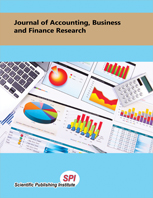Empirical Relationship between Operational Efficiency and Profitability (Evidence from Pakistan Exploration Sector)
DOI:
https://doi.org/10.20448/2002.21.7.11Keywords:
Total assets turnover, Fixed asset turnover, Debtors turnover, Current ratio, Return on equity.Abstract
This study is a part of our course work. In this study the operational efficiency of firms is checked against profitability. For the purpose of research oil and gas sector of Pakistan stock exchange is selected. Six years data from 2010-2015 is collected through financial reports of companies. Since efficiency can be measured through several financial ratios. In this article total asset turnover, fixed assets turnover, debtors turnover are used as explanatory variables and current ratio and quick ratio as control variables. The profitability of firms is measured through return on equity. Ordinary least square, correlation matrix and descriptive statistics are used to describe the findings of the study and features of the data. The results of the study show that the total assets turnover, debtors turnover and quick ratio have strong negative impacts on the profitability measured by ROE, of firms. The current ratio and fixed asset turnover have positive impacts on the return on equity. The results of the study support the hypothesis that efficiency as measured by (total assets turnover, debtors’ turnover, quick ratio current ratio and fixed asset turnover) has impacts on the profitability of firms.


